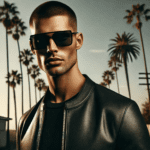One of the biggest lies the modern business world ever sold?
That you need to be the “face” of your brand.
Social media trained an entire generation to think the only path to success is turning yourself into a personality-driven content machine.
But here’s what they don’t tell you:
90–95% of all successful brands are faceless.
They don’t revolve around a personal story, a talking head, or a daily stream of dopamine-chasing reels.
Even the ones named after people.
Even the ones that started with public founders.
Even the ones you think of as iconic.
Let’s break this down.
What Is a Faceless Brand?
A faceless brand is simple:
It’s a brand where the customer-facing identity isn’t driven by a person’s face, personality, or story – regardless of the founder’s fame.
You’re not following them for their lifestyle.
You’re buying into the product, the aesthetic, the vibe, or the culture it creates.
This applies across industries:
-
Apple may have had Steve Jobs, but Apple doesn’t need Tim Cook dancing on TikTok. The brand now runs on product and ecosystem, not personality.
-
Calvin Klein, Ralph Lauren, Tommy Hilfiger – those are just names. No one’s following Calvin’s daily updates.
-
Nike has never been about Phil Knight’s personality. The face is the athlete, not the founder. The culture sells itself.
Even Dior, one of the most iconic fashion houses, continued without missing a beat after Galliano’s departure. The brand’s identity wasn’t built on his face. It was built on the legacy, the silhouette, the aura.
The product – not the personality – carries the weight.
This is what most people miss.
Why the “Personal Brand” Obsession Is a Trap
The creator economy made people think everything had to be personal.
Suddenly:
Businessman = celebrity influencer
CEO = content creator
Brand = constant presence
Everyone’s chasing attention, thinking that likes = leverage.
But likes are not the business model.
Let that sink in.
You don’t need to be:
- A podcaster
- A guru
- Or an on-camera personality
to build a real empire.
In fact, most people shouldn’t be.
Because the truth is:
-
Not everyone’s built for the spotlight
-
Not everyone wants to play the 24/7 content hamster wheel
-
Not every business needs a face
Faceless branding is the original model.
What’s new is this weird addiction to fame-masking-as-marketing.
A trap that makes people confuse performance with product, and dopamine with dollars.
Proof: The Real Numbers
Let’s break it down by industry:
| Industry | % Faceless Brands |
|---|---|
| Tech (SaaS, Hardware) | 85–90% |
| Fashion (Mid to High) | 85–95% |
| CPG (Food, Beverage, Retail) | 90%+ |
| Automotive | 95%+ |
| Music Labels | 95%+ |
| Media/Influencer Brands | <20% |
| Coaching & Creator Economy | <10% |
If you eliminate influencers, gurus, and YouTube personalities, almost every brand in the world operates facelessly.
The biggest players in every industry?
They’re powered by products, systems, aesthetic, culture – not a face.
Even in fashion, where names are often attached, the persona is symbolic, not active.
You’re not buying Helmut Lang because he dropped a podcast.
You’re buying it because the design evokes something timeless, sharp, or raw.
Designer-Led ≠ Personality-Led
This is where nuance matters.
Let’s take Rick Owens as an example.
Yes, he appears sometimes.
Yes, his look is distinctive.
But:
-
He’s not running influencer funnels
-
He’s not posting daily tiktok reels
-
He doesn’t need to be seen for the brand to function
The value is in the design world he created.
That’s what people buy into.
Not his face.
Not his voice.
Not his story.
Call it “designer-imprinted facelessness.”
He’s the source – but the brand is bigger than him.
That’s the real flex:
Embedding soul into the work, without tying it to your ego or physical presence.
Why This Matters Now (The AI Advantage)
Here’s where it gets powerful.
We’re now in an era where AI allows you to build multiple faceless brands simultaneously.
You can generate:
-
Product ideas
-
Brand voice
-
Design concepts
-
Content systems
-
Customer journey flows
– without ever showing your face.
You’re no longer limited by charisma, camera presence, or perception.
You can bypass every surface-level judgment people project onto you.
Skin color? Irrelevant.
Accent? Doesn’t matter.
Style, swag, vibe? You build the one you want.
You create the myth.
And let the product do the talking.
This is the ultimate equalizer for those who understand brand-building at a strategic level.
So What Should You Do?
Ask yourself:
Do you want to be a walking commercial?
Or do you want to build machines that move with or without you?
Do you want to build one audience, tied to your face?
Or build multiple brands that scale quietly in the background?
This isn’t about hiding.
You can still show yourself when it makes sense.
You can still speak, lead, or create content if you want.
But now – it’s optional.
Not required.
And that’s the most freeing position you can be in.
Final Word: You’re Already Ahead
If you’re building a brand that’s art-first, vibe-first, or product-first – you’re already in the majority.
You’re playing the same game as:
-
Supreme
-
Apple (post-Steve)
-
Netflix
-
Coca-Cola
-
Chanel
None of them rely on a face.
They rely on symbolism, culture, and consistency.
Your aesthetic is your presence.
Your system is your spokesperson.
Your product is your proof.
Faceless isn’t a disadvantage.
It’s the final form.
Build accordingly.
Build Faceless Brands at Scale – Without Guessing or Showing Your Face.
✅ Get 100+ Proven AI Prompts That Power Your Business
✅ Craft Offers, Funnels, and Copy That Sell – Without Needing to Be the Face
✅ Stop Guessing – Start Taking Strategic Action
Leverage AI² to Scale Multiple Faceless Brands at Once – Without Burnout.
[Buy Now to Unlock the Prompts and Build Brands That Work Smarter]
You May Also Like:
Entrepreneur Reveals: The “Plumber’s Trick” That Simplifies Business (And Multiplies Your Leverage)
"What's The Difference Between An Entrepreneur Vs. Wantrepreneur?"
The Top 10 Books Every Entrepreneur Needs to Read
Experts Say: This Is the Most Low-Risk Business to Start Today
Now You Can Escape The Cubicle Life - With Style
The Wealthy Artist: Thriving Creatively and Financially
The Architecture of Sales: Building Conviction Through Structured Communication
The Art and Science of Converting Cold Traffic
My name is Mister Infinite. I've written 600+ articles for people who want more out of life. Within this website you will find the motivation and action steps to live a better lifestyle.

